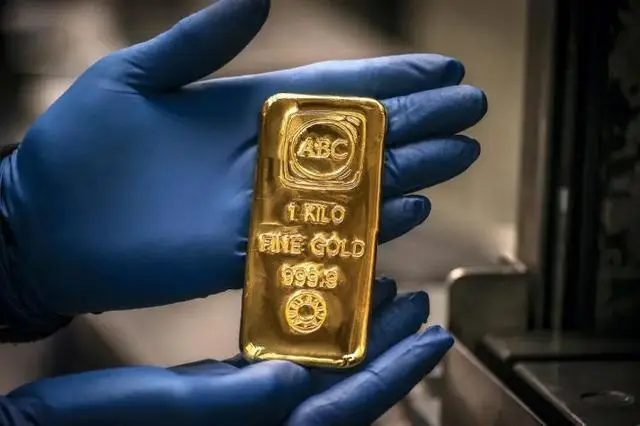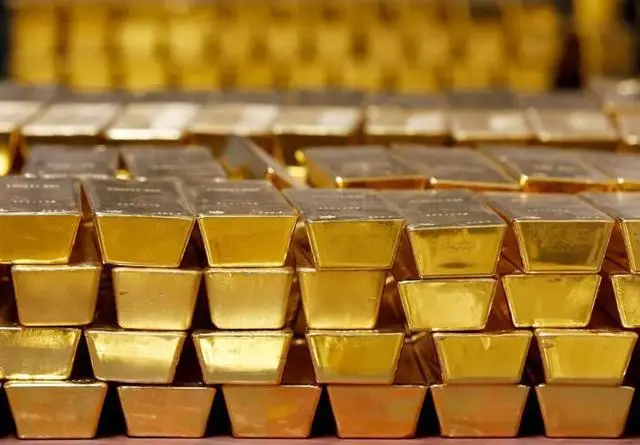The international gold price recently hit a new high, breaking through the historic $4,000 per ounce mark, attracting widespread market attention. How has gold performed? Why has the international gold price soared so sharply? Faced with numerous uncertainties, can the upward trend in gold prices continue?

How is the international gold price trending?
On October 7, the most actively traded December 2025 gold futures contract on the New York Mercantile Exchange (NYMEX) broke through $4,000 per ounce, reaching a record high of $4,014.60 per ounce.
So far this year, the international gold price has risen by approximately 50%, making it one of the world's best-performing major assets. Analysts believe that the fear of missing out (FMO) sentiment in the gold market is stronger than profit-taking, resulting in sufficient buying to push up the price despite the overbought state.
The record highs in gold prices reflect the dual signals of rising global safe-haven demand and the weakening credibility of the US dollar.
Ray Dalio, founder of Bridgewater Associates, stated at the Greenwich Economic Forum in Connecticut on October 7 that investors should allocate "approximately 15% of their assets to gold." He argued that debt instruments "are no longer an effective storehold of wealth" and that gold is "the best-performing asset when the rest of the portfolio declines."
Goldman Sachs released a new report on the 6th, raising its gold price forecast for December 2026 from $4,300 per ounce to $4,900, citing "strong central bank buying and private sector diversification demand." The report predicts that central banks will purchase 80 tons and 70 tons of gold annually over the next two years, respectively. Emerging market central banks will continue to increase the proportion of gold in their reserves to reduce their reliance on the US dollar.
Why are international gold prices soaring?
Gold is a classic safe-haven asset. The combined effects of the US government shutdown, political unrest in France, economic concerns in the US, Japan, and other countries, as well as ongoing geopolitical conflicts, have fueled market demand for gold as a safe haven.
- A weak US dollar and uncertainty surrounding the US fiscal policy have significantly increased gold's safe-haven appeal. The ongoing US federal government shutdown has delayed the release of key economic data, leaving the market with a lack of clear guidance on the economic outlook. To mitigate risks, investors are continuing to increase their gold holdings.
- The Federal Reserve's recent interest rate cut and hint at continued accommodative monetary policy this year have reduced the appeal of US dollar assets. Declining real interest rates and improved liquidity expectations are supporting gold's price rise.
- Continued gold purchases by global central banks and inflows into gold exchange-traded funds (ETFs) have also been key drivers of gold's record highs. A World Gold Council report shows that central banks resumed large-scale gold purchases in August, adding a net 15 tons to their reserves. Strong demand drove gold ETF holdings up 3.6 million ounces in September, bringing the year-to-date increase to 97.2 million ounces, the highest level since September 2022.
Furthermore, Japan's economy currently faces multiple challenges, including a fiscal and monetary policy dilemma, sluggish economic growth, insufficient international competitiveness, and increased US tariffs. Increasing political polarization in France has weakened its ability to undertake large-scale fiscal consolidation. These factors, coupled with ongoing geopolitical conflicts, have contributed to a continued rise in international gold prices.

Can the gold price rally continue?
Looking ahead, if the Federal Reserve cuts interest rates further, the US dollar continues to weaken, and geopolitical tensions persist, gold prices may continue to strengthen. However, as gold prices continue to hit new highs, some believe the market needs to be wary of short-term correction risks. Several investment banks predict that international gold prices may fluctuate between $3,800 and $4,100 per ounce this year.
Earlier this year, Bank of America predicted that gold prices would easily reach $4,000 this year. With that target achieved, the bank believes that gold has largely fulfilled its expected gains and is currently slightly overbought. Bank of America issued a report on the 6th, urging investors to exercise caution, predicting that gold may face "failure of upward momentum" and may experience "consolidation or a correction" in the fourth quarter, potentially as low as $3,525. Meanwhile, UBS predicts that gold prices may fall back to $3,800 in the short term.
Other viewpoints suggest that gold prices remain bullish in the medium to long term, as global geopolitical tensions remain unlikely to change in the short term, global central banks continue to purchase gold, and expectations of a Federal Reserve rate cut rise. UBS's medium- to long-term bullish outlook for gold is $4,200. Citigroup believes that if the Federal Reserve continues to cut interest rates in 2026, gold may challenge the $5,000 mark.
Analysts believe that factors such as the restructuring of the US dollar credit system and high US debt have shaken the foundation of the dollar's credibility, and that gold's value will continue to rise in the long term.

%20--%3e%3c!DOCTYPE%20svg%20PUBLIC%20'-//W3C//DTD%20SVG%201.1//EN'%20'http://www.w3.org/Graphics/SVG/1.1/DTD/svg11.dtd'%3e%3csvg%20version='1.1'%20id='图层_1'%20xmlns='http://www.w3.org/2000/svg'%20xmlns:xlink='http://www.w3.org/1999/xlink'%20x='0px'%20y='0px'%20width='256px'%20height='256px'%20viewBox='0%200%20256%20256'%20enable-background='new%200%200%20256%20256'%20xml:space='preserve'%3e%3cpath%20fill='%23FFFFFF'%20d='M194.597,24.009h35.292l-77.094,88.082l90.697,119.881h-71.021l-55.607-72.668L53.229,232.01H17.92%20l82.469-94.227L13.349,24.009h72.813l50.286,66.45l58.148-66.469V24.009z%20M182.217,210.889h19.566L75.538,44.014H54.583%20L182.217,210.889z'/%3e%3c/svg%3e)




